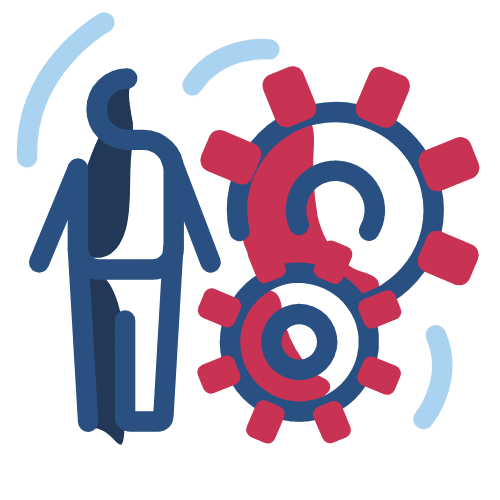
So you’ve got your content marketing basics down to a T. You’ve mastered the art of communicating through social media and email. But are you able to talk to your audience by hitting that sweet spot that tickles a particular target just right so that they’re inclined to swear their loyalty? If you have yet to do this consistently, then read on.
There is a reason why “old school” sales are still so effective even now—their benefits just need to be digitized. Each and every master salesman will tell you that it’s all about the personal connection with their clients, that gaining their trust and loyalty is all about communicating with them as if they were both VIPs and best friends. No master salesman would come to a high-value client with a pre-prepared marketing spiel that sounds robotic and hollow. And in this digital age, marketers have to do the same with their audiences.
Making Content Personalization Practical

But nowadays, savvy digital marketers call it personalization.
Some of you may be dreading the amount of work that goes into this. After all, treating each client as an individual account and creating campaigns to address their specific needs at a granular level is far more complex than making a communications piece that addresses a broader audience, but we can assure you the payoff is worth it. Let’s take a look at a leader of personalization: the phenomenal Netflix which is the undisputed king of video streaming services. Netflix suggests content to you dependent on your preferences, which will differ from the suggestions it makes to your family and friends.
This has been key to their success, even before the pandemic hit and many turned to Netflix for stay-at-home entertainment. In 2019, just before lockdowns, the company had 167 million subscribers across the globe, rising from just 70.8 million in 2015.
Netflix’s main strategy includes knowing what their audience wants to almost creepy levels of accuracy. Every time you log on, their analytics and other data services get into gear: they learn about your preferences, the shows and movies you enjoy, and how often you video-binge. They continue to learn more about you to make the necessary recommendations that keep you coming back for more, and thus you spend more time on their platform binge-watching the latest series.
Now, what if your brand can harness this level of personalization through your content marketing to make your message and your products unique and relevant to all of your buyer personas?
Mastering the Basics

Getting started in personalized content marketing is the easy part, and it all comes down to the basics. First, you have to prepare your basic strategy by knowing the answer to ‘why’. Why do you have to personalize and how will it relate to your key business drivers? Your business goal is your guide to the steps you need to take to make your personalized communication successful.
Second, you have to know who you’re talking to. Knowing your audience is key to making people listen to you. If you don’t speak to their interests and likes, you will turn people off before you can make the pitch. On the other hand, crafting the right message will speak to them personally and grab their attention. Research your customers to create personas that will help you understand what makes them tick. The more you understand them, the more personal your message will be and the more they will respond.
When you have these basics mastered, you’re on your way to refining your personalization techniques to help you gain better conversions. In fact, as of 2018, according to Marketing Charts, successful personalized marketing techniques are able to increase conversion rates by 100% (to 3.4%). Even add-to-cart rates increased by 74%, which results in higher sales for companies.

5 Techniques to Personalize Your Content Marketing
Now that you have a solid foundation for your personalization strategy, it’s time to put it to work. To help you, here is a list of the five best practices in content personalization that can help you increase your audience engagement:
1. The Email Technique
Even in the age of social media, email marketing is still extremely relevant. When used well in the context of personalized content, in a study by Campaign Monitor, companies like Refinery 29 experienced a 760% increase in revenue as their content is tailored to their segmented marketed groups. Audiences who have subscribed to mailing lists they’re interested in—like your mailing list—have a higher chance of clicking on and reading your email. When your customers take the initiative to let you contact them, you already have a foot in the door. All you need to do is hook them with exactly the thing that they desire.
Spice up your messaging, be clear on how your offerings provide a solution to their toughest challenges, all while infusing the tone of your email with warmth and affection. The most successful email marketers get lots of responses because they sound and act more like coaches who want their clients to win in their respective battles, instead of salesmen who just want to make a quick buck.
2. The Image Technique
Dynamic content is your friend when it comes to this technique. Of course, different personas prefer different things. One might find dogs more appealing than cats and some cat lovers are a little indifferent to dogs—when you’re an organization like PETA, this could mean increasing your donations just by showing the image of the right animal to your target audience.
It sounds simple but it is effective. Cat lovers would click on a cute image of a furry feline reclining cozily on a couch, while dog owners would be more drawn to a photo of puppies playing in the grass.
3. The Recommendation Technique
Amazon arguably laid the foundation for this technique…and to date, is still succeeding at it. In an analysis by Fortune, Amazon’s recommendation system was the key to the company’s 29% increase in sales from $9.9 billion to $12.83 billion in the same year from its first to second fiscal quarters. This is all due to the company’s data-driven marketing which helps them gain an insight into what users are interested in and then create an algorithm to show users things that they might want to buy. Amazon sites show these to their audiences in their platform, ads, and even in the emails they send out to their customers. Amazon identifies their customer’s interests and recommends products along those lines.
If you’re an Amazon member who regularly browses their site, carefully check the list of recommendations they post on your private account page the next time you log in. Let’s say you clicked on the latest kindle release of Dan Brown’s thriller yesterday, chances are if you click today, you’ll find more books by Brown on your recommendation list. You might also see recent bestselling thrillers written by other authors.
The data analytics of Amazon makes the logic of its offer simple, but compelling. You spent five minutes reading up on Dan Brown’s thriller. Hence, there is a good chance you might just be interested in his other books—and in other adventures written by his rivals.
4. The Personality Technique
Personality quizzes are increasingly popular because the people who click on them want to get to know themselves a little better. It does not matter if the 1-minute online tests are backed up by scientific research or not—users find it hard to turn away from a self-assessment exam that promises to tell them their most suitable career path, or reveals the celebrity who most resembles their personality.
As a content marketer, you can use this personalization technique to get to know your audience even more. Your brand likely has different offers for different prospects, and using them in tandem with personality quizzes is a great way to get more data out of your audience with their explicit permission. Cadbury did this and was able to get their customers’ information in exchange for a perfectly crafted personalized video. The campaign gained the company a 65% clickthrough rate and a 33.6% conversion rate.
But unlike other platforms that just use these quizzes to get clicks and email registrations, come up with a more authoritative, reliable, and data-driven quiz that will really give your users the answers that they (and you) need to hear. Your quiz should still be fun and light-hearted in tone, but ensure your answers offer something relevant and of value to your target audience.
5. The First-Time Visitor Technique
First-time visitors are often the most difficult market to target since you only have one chance to make a good first impression, and you have to do it in as short as 3 seconds. Knowing that your visitor has come in contact with you for the first time, you need to give them a good reason to come back, especially since they have very different needs from those who have visited you more than once. One method is to offer free resources or discounts to get their interest. This gives your brand more value in the eyes of your audience, resulting in higher sales like the 2000% increase Marsh was able to get with their free samples.
These techniques are just some of the most effective and creative ways companies leverage personalization to get the most out of their content marketing. As long as your organization keeps them in mind as they craft their content marketing strategy, you have a far greater chance of increasing your audience engagement—and with it your market share and bottom line.










